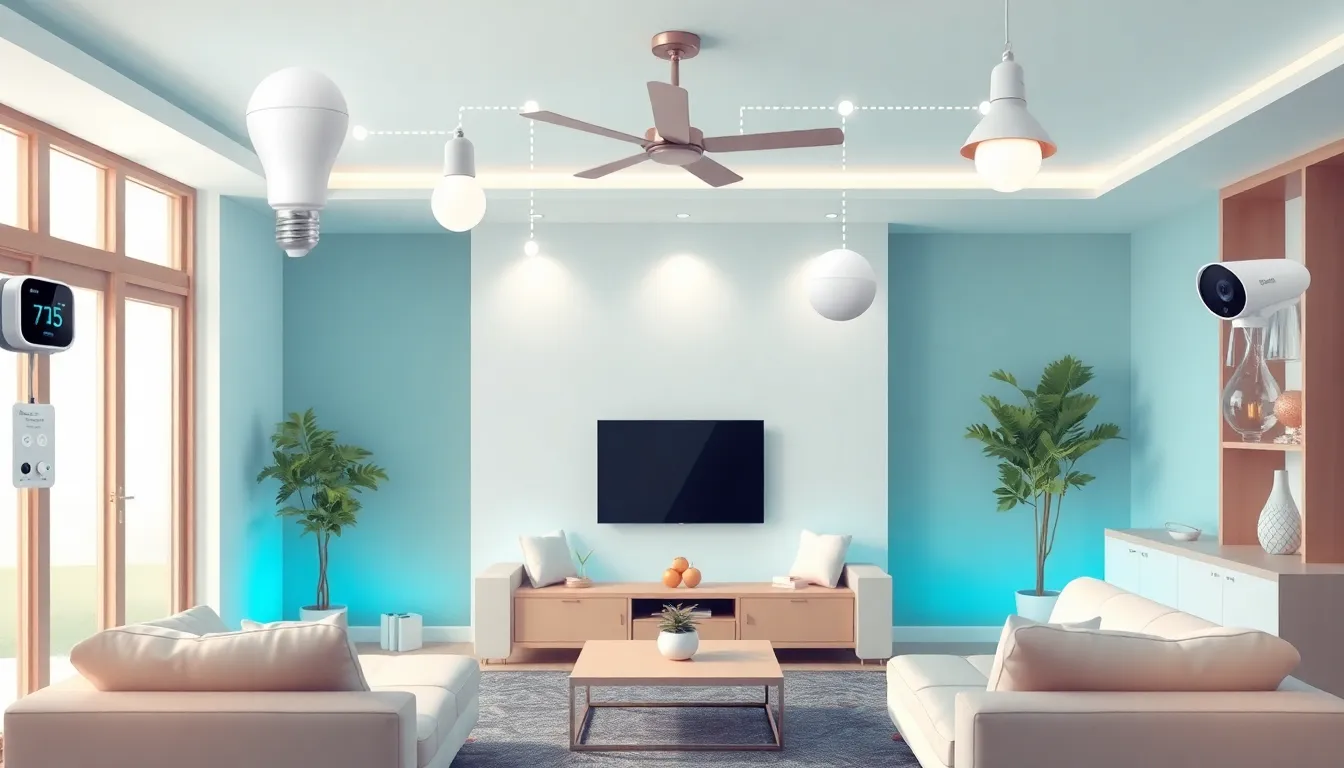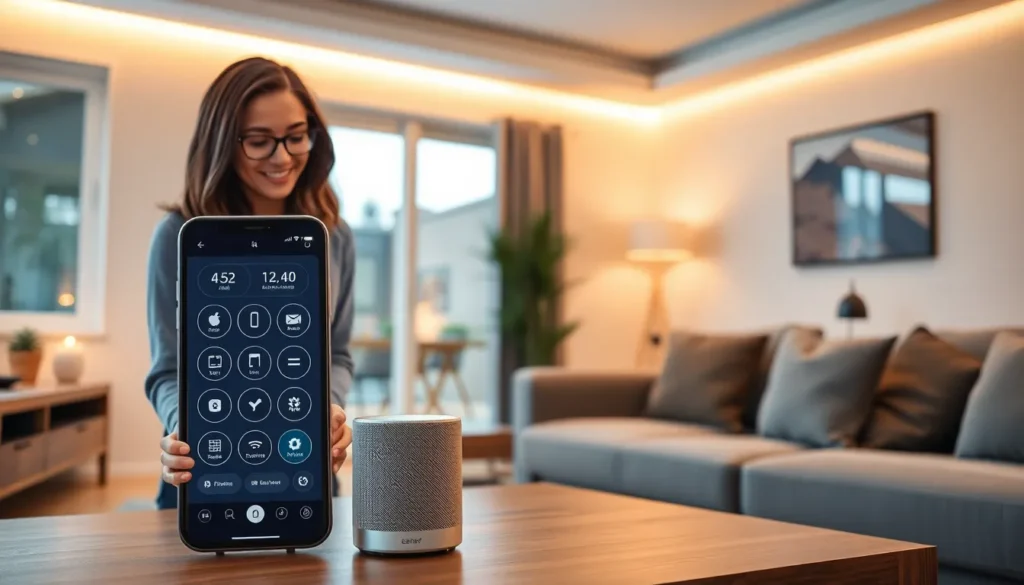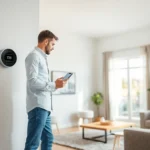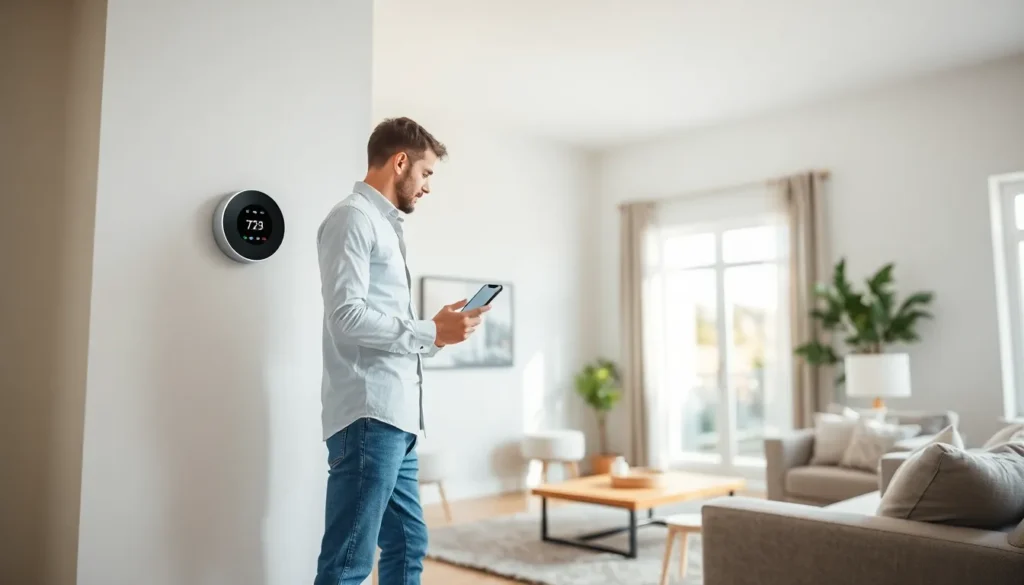As smart homes become the norm, they promise convenience and efficiency at the touch of a button. But behind the sleek interfaces and voice-activated devices lurk challenges that can turn even the most tech-savvy homeowner into a confused cat chasing a laser pointer. From connectivity issues to compatibility headaches, navigating the world of smart home technology isn’t always as easy as it seems.
Imagine your smart fridge refusing to cooperate while you’re trying to whip up dinner, or your lighting system staging a revolt during movie night. These hiccups can lead to frustration, and let’s be honest, nobody wants to wrestle with a temperamental thermostat after a long day. Understanding these challenges is the first step toward mastering your smart home and transforming it into the seamless sanctuary it’s meant to be.
Table of Contents
ToggleOverview of Smart Home Technology
Smart home technology encompasses a variety of interconnected devices that enhance everyday living. Devices such as smart speakers, thermostats, and security cameras provide convenience, energy efficiency, and increased security. These devices often integrate with smartphone applications, allowing users to control their home remotely.
Most smart home systems rely on wireless connectivity, including Wi-Fi, Zigbee, or Z-Wave, ensuring seamless communication between devices. Users benefit from automation features, like scheduling lights or managing energy consumption based on real-time data. Compatibility among devices plays a crucial role, as some may not interact well with others, leading to user frustration.
Addressing these challenges requires careful selection of devices that operate within the same ecosystem. Platforms such as Google Home and Amazon Alexa offer a wide range of compatible products. Reliability and performance also hinge on the strength of the network, making it essential to invest in a robust router.
Security poses another significant consideration. Vulnerabilities in smart home devices can lead to unauthorized access, compromising personal data. Regular updates and strong passwords are vital for enhancing security.
Finally, user experience varies based on individual preferences and technological expertise. While some smart home users thrive on advanced setups, others may prefer simpler configurations. Understanding the various aspects of smart home technology helps users navigate these challenges effectively.
Common Smart Home Challenges


Smart homes offer convenience but also present several challenges. Key issues often arise in compatibility, security, and user experience.
Compatibility Issues
Compatibility problems frequently frustrate users. Devices from different brands may not communicate effectively, leading to limited functionality. For example, a smart light bulb may not integrate with a different brand’s hub. Users might find a smart thermostat unable to connect with security cameras, creating a disjointed experience. The solution lies in selecting devices within the same ecosystem, such as Google Home, to minimize these conflicts.
Security Vulnerabilities
Security vulnerabilities pose significant risks in smart homes. Weak passwords and outdated firmware can lead to unauthorized device access. Hackers might exploit poorly secured networks to infiltrate systems, compromising personal data. Various methods, such as enabling two-factor authentication and regularly updating device software, improve security. Users benefit from using strong, unique passwords for each device, enhancing protection against potential breaches.
User Experience Obstacles
User experience obstacles can deter individuals from fully embracing smart technology. Some users struggle with complex app interfaces or may lack the technical knowledge to set up devices. Frustration can stem from confusing instructions or insufficient customer support. Those who prefer simplicity should look for user-friendly interfaces and devices designed with accessibility in mind. Considering personal technology comfort levels aids in selecting the ideal smart home setup.
Overcoming Smart Home Challenges
Addressing the obstacles in smart home technology ensures a smoother experience. Users can navigate these challenges with informed decisions.
Choosing the Right Devices
Selecting devices that work seamlessly together minimizes compatibility issues. Each device should belong to a compatible ecosystem, such as Google Home or Amazon Alexa, which supports better integration. Checking compatibility before purchase saves time and frustration. Users benefit from researching reviews and specifications to ensure devices interact effectively. Ensuring Wi-Fi compatibility also contributes to a smoother experience since many devices depend on stable internet connections. Prioritizing brands with strong reputations can lead to better customer support and more reliable products. Smart home devices that communicate well reduce installation hassles and enhance user satisfaction.
Implementing Strong Security Practices
Securing smart home devices prevents unauthorized access and protects personal data. Users must create strong, unique passwords that combine letters, numbers, and symbols. Utilizing two-factor authentication adds an extra layer of protection for sensitive accounts. Regular updates of device firmware ensure vulnerabilities remain patched with the latest security features. Monitoring network traffic can help identify unusual activity that indicates a breach. Disabling unused features on devices also limits potential entry points for cybercriminals. Prioritizing network security by employing a robust router with built-in security features strengthens overall safety against threats. Communicating these practices consistently aids in maintaining a secure smart home environment.
Future of Smart Home Technology
Smart home technology continues to evolve, offering innovative solutions to enhance daily living. Integration of artificial intelligence allows devices to learn user behaviors, improving automation. Voice control remains a key feature, streamlining interactions with smart assistants like Google Assistant and Amazon Alexa.
Increased emphasis on interoperability between devices emerges as a critical need. Consumer demand drives manufacturers to create systems compatible with a variety of products, reducing frustrations associated with connectivity. Improved standards, such as Matter, aim to simplify device integration within smart homes.
Security enhancements also focus on protecting user data. Continuous implementation of robust encryption methods can safeguard communication between devices. Regular software updates ensure that vulnerabilities get addressed promptly, fortifying overall system security.
Environmental sustainability incorporates into the design of smart home products. Energy-efficient devices not only reduce utility bills but also promote eco-friendly practices. Smart thermostats and energy monitoring systems provide insights into electricity consumption, encouraging more responsible usage.
User experience will see significant improvements with more intuitive interfaces. Simplified mobile applications allow users to manage their smart homes effortlessly. Furthermore, customer support plays a crucial role in fostering user satisfaction, as responsive service helps tackle issues promptly.
Looking ahead, the potential for smart home technology remains vast. Innovations such as smart appliances and advanced home security systems promise to redefine modern living. These advancements have the capacity to enhance comfort and convenience, setting the stage for a more connected and efficient future.













